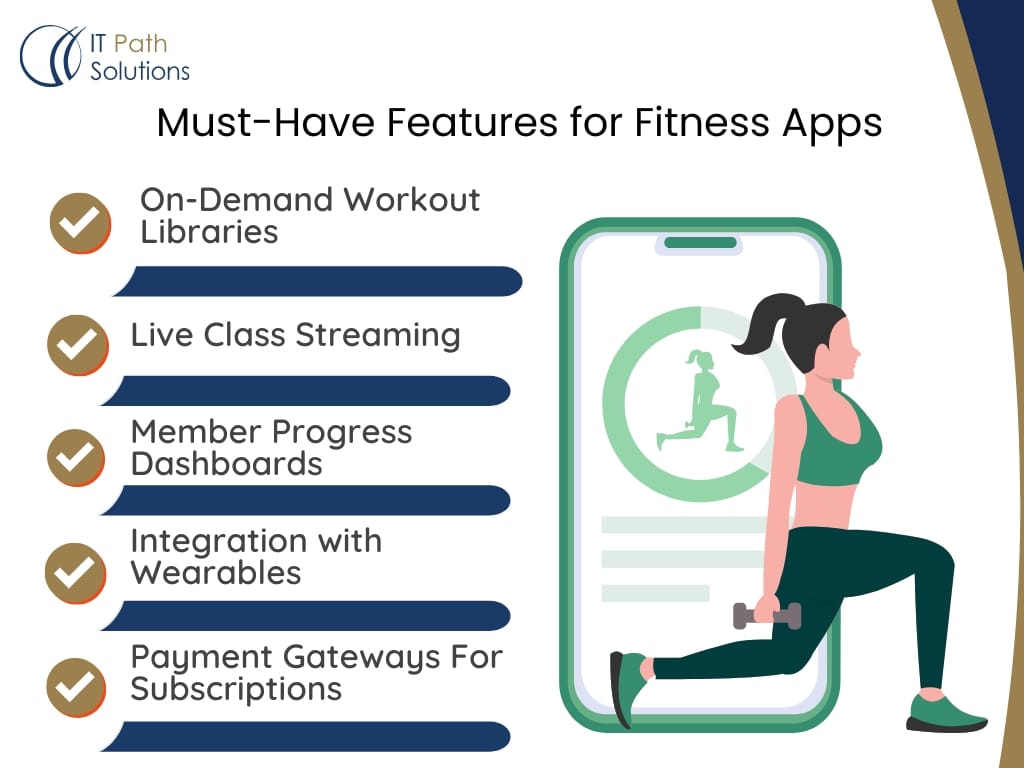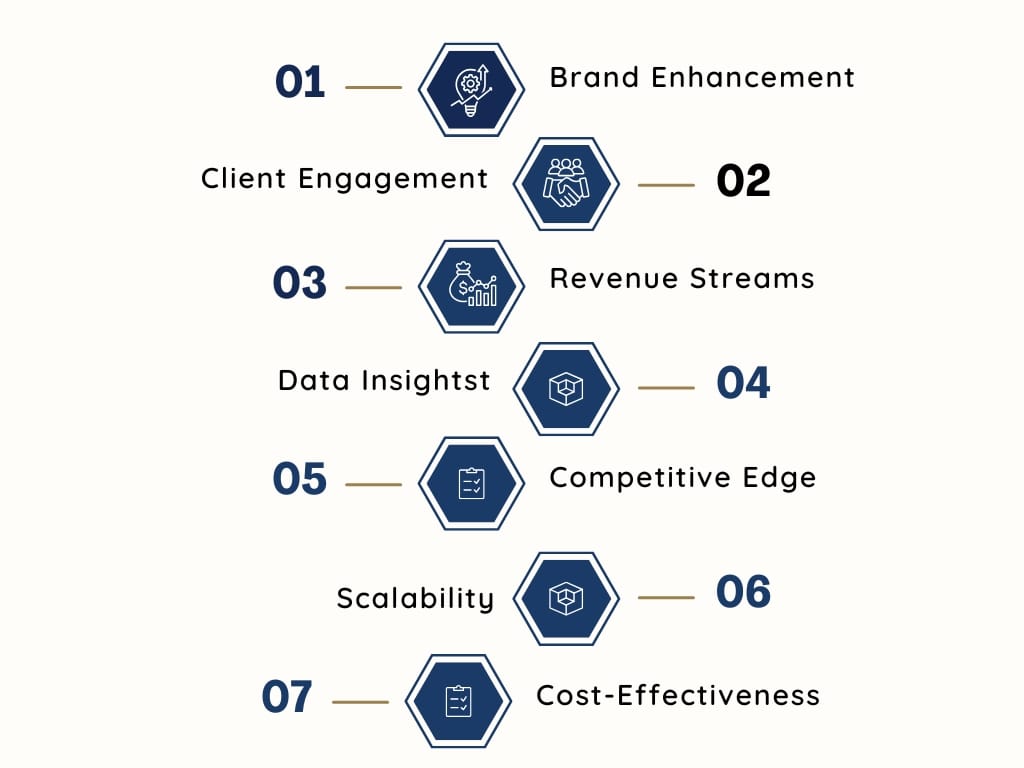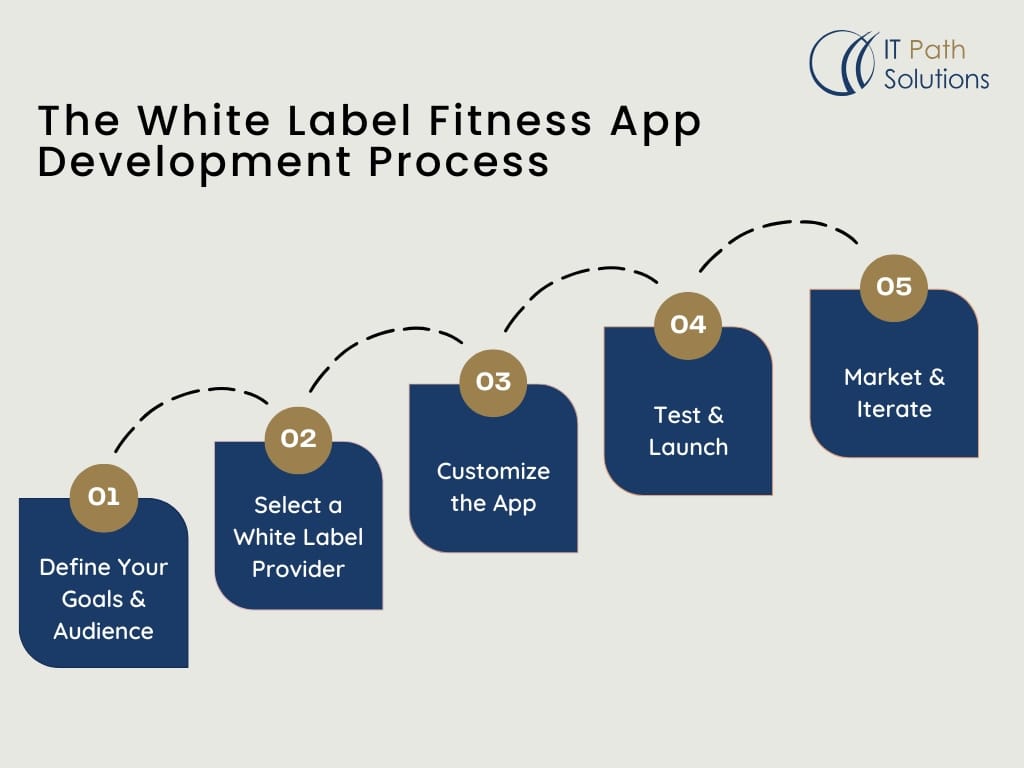The Ultimate Guide to White Label Fitness App Development in 2025
Keyur Patel
September 12, 2025
8 min
The fitness industry is sprinting toward a digital future, and white label fitness apps are the ultimate growth hack for gym owners, personal trainers, and wellness entrepreneurs. With the global fitness app market projected to hit $31 billion by 2030 (Daffodil SW), now is the time to stake your claim. This 3,800+ word guide delivers everything you need to build, launch, and scale a custom branded fitness app that outperforms competitors and captivates members.
In this comprehensive guide, we’ll explore:
- What white label fitness apps are and how they work
- Key benefits over custom-built solutions
- The step-by-step development process
- Best practices for maximizing ROI
- Real-world use cases
Whether you’re a gym owner, personal trainer, or corporate wellness provider, this guide will equip you with actionable insights to leverage white label fitness apps for business growth.
What is a White Label Fitness App?
A white label fitness app is a pre-built, customizable software solution designed for businesses to rebrand as their own. Unlike a custom fitness app, which is developed from scratch, white label apps offer ready-made frameworks with core features like workout tracking, nutrition planning, and progress analytics. Companies can tailor these apps with their logos, colors, and content, creating a custom branded fitness app without the hassle of coding or hiring developers.
How Do White Label Fitness Apps Work?
- Licensing: Purchase a license from a white label provider.
- Customization: Add your branding, adjust features, and upload content.
- Launch: Deploy the app under your brand name on app stores.
2025’s Must-Have Features for Fitness Apps

Popular features in white label solutions include:
- On-demand workout libraries
- Live class streaming
- Member progress dashboards
- Integration with wearables (Apple Watch, Fitbit)
- Payment gateways for subscriptions
Core Features: The Non-Negotiables
- AI-Powered Workout Builder
- Auto-generates plans based on goals (weight loss, muscle gain)
- Adjusts difficulty via wearable data (e.g., Garmin stress scores)
- Biometric Integration
- Syncs with 50+ devices (Apple Watch, Oura Ring)
- Tracks:
- Heart rate variability (HRV)
- Sleep quality
- Blood oxygen levels
- Community Hub
- Social feeds with photo/video posts
- Challenges with badges (e.g., “10K Steps Club”)
- Direct messaging between members
- Monetization Tools
- Subscription tiers (bronze/silver/gold)
- In-app personal training bookings
- Affiliate partnerships (10–20% commission on supplement sales)
Key Benefits of Choosing a White Label Fitness App

Implementing a white label fitness app can bring numerous advantages to your fitness business:
Brand Enhancement: Offer a professional, branded digital experience that reinforces your business identity.
Client Engagement: Increase client retention through regular app interactions and personalized content.
Revenue Streams: Create new income opportunities through in-app purchases, premium content, and virtual coaching.
Data Insights: Gain valuable data on client behavior and preferences to inform business decisions.
Competitive Edge: Stand out in a crowded market by offering a comprehensive digital fitness solution.
Scalability: Easily grow your digital offerings as your business expands.
Cost-Effectiveness: Avoid the high costs and risks associated with custom app development.
White Label vs. Custom Fitness App Development: Which is Right for You?
When deciding between a white label solution and custom app development, consider these factors:
| Factor | White Label | Custom Development |
| Cost | 30k–120k | $120k+ |
| Time to Launch | 4–12 weeks | 6–18 months |
| Maintenance | Handled by provider | In-house team required |
| Customization | Branding + limited features | Full control over all aspects |
White Label Fitness Apps
Pros:
- Faster time-to-market
- Lower upfront costs
- Proven functionality and user experience
- Regular updates and maintenance handled by the provider
- Scalability built-in
Cons:
- Less flexibility in unique feature development
- Potential limitations in branding customization
- Shared underlying architecture with competitors
Custom Fitness Apps
Pros:
- Complete control over features and functionality
- Unique user experience tailored to your brand
- Potential for proprietary technology development
Cons:
- Higher development costs (often $50,000 to $500,000+)
- Longer development timelines (6-12 months on average)
- Ongoing maintenance and update responsibilities
- Higher risk of technical issues and security vulnerabilities
For most fitness businesses, especially those looking to enter the digital space quickly and cost-effectively, white label solutions offer a compelling advantage. They provide a balance of customization, functionality, and affordability that’s hard to match with custom development.
The White Label Fitness App Development Process

Step 1: Define Your Goals & Audience
Before selecting a white label provider, clearly outline your business objectives and target audience. Consider:
- Primary app functions (e.g., workout tracking, nutrition planning, community features)
- Target user demographics and fitness levels
- Integration needs with existing systems (CRM, payment processors, etc.)
- Revenue goals and monetization strategies
Step 2: Select a White Label Provider
Research and compare white label fitness app providers based on:
- Feature sets and customization options
- Pricing models (subscription, revenue share, one-time fee)
- Client portfolio and success stories
- Technical support and update frequency
- Integration capabilities with third-party services
Top white label fitness app providers in 2025 include:
- Movement
- Trainerize
- Virtuagym
- MyPTHub
- Exercise.com
Step 3: Customize the App
Work with your chosen provider to tailor the app to your brand:
- Apply your logo, color scheme, and brand imagery
- Customize user interfaces and navigation
- Upload your content (workout videos, nutrition plans, etc.)
- Set up integrations with your existing tools and platforms
- Configure monetization features (subscriptions, in-app purchases)
Step 4: Test & Launch
Thoroughly test your branded app before launch:
- Conduct user acceptance testing with a small group of clients
- Ensure all features work as intended across different devices
- Test payment processing and data synchronization
- Prepare app store listings (screenshots, descriptions, keywords)
- Submit your app to the Apple App Store and Google Play Store
Step 5: Market & Iterate
Post-launch activities are crucial for success:
- Promote your app through email marketing, social media, and in-facility advertising
- Gather user feedback and usage data
- Regularly update content to keep users engaged
- Work with your white label provider to implement new features and improvements
- Monitor key performance indicators (KPIs) like user acquisition, retention, and revenue
Top Use Cases for White Label Fitness Apps
-
Gym Chains and Fitness Studios
-
-
- Offer members 24/7 access to workouts and class bookings
- Implement loyalty programs and challenges to boost retention
- Provide virtual personal training options
-
-
Personal Trainers and Coaches
-
-
- Deliver personalized workout plans and progress tracking
- Offer nutrition guidance and meal planning
- Facilitate client communication and appointment scheduling
-
-
Corporate Wellness Programs
-
-
- Engage employees with fitness challenges and rewards
- Provide stress management and mental health resources
- Track program participation and health metrics
-
-
Fitness Equipment Manufacturers
-
-
- Offer companion apps for smart equipment
- Provide guided workouts and equipment tutorials
- Track usage data and offer personalized workout recommendations
-
-
Wellness Retreats and Health Resorts
-
- Extend the guest experience beyond their stay
- Offer pre and post-retreat fitness and nutrition guidance
- Build a community of past and future guests
Best Practices for Maximizing Success
- Focus on User Experience: Ensure your app is intuitive and easy to navigate. Regularly gather user feedback and make improvements accordingly.
- Provide Valuable Content: Offer a mix of free and premium content to keep users engaged and encourage upgrades.
- Leverage Data Analytics: Use insights from user data to inform your content strategy, feature development, and marketing efforts.
- Implement Gamification: Incorporate challenges, badges, and leaderboards to boost user engagement and motivation.
- Offer Personalization: Use AI and machine learning to provide tailored workout and nutrition recommendations based on user goals and progress.
- Integrate Social Features: Build a community within your app by allowing users to connect, share achievements, and participate in group challenges.
- Ensure Data Privacy and Security: Clearly communicate your data handling practices and ensure compliance with regulations like GDPR and CCPA.
- Provide Excellent Support: Offer responsive customer support through in-app chat, email, or phone to address user issues promptly.
- Stay Current with Trends: Regularly update your app with new features and content to reflect the latest fitness trends and user preferences.
- Optimize for App Store Success: Use app store optimization (ASO) techniques to improve your app’s visibility and download rates.
Future Trends in White Label Fitness Apps
As we look ahead to 2025 and beyond, several trends are shaping the future of white label fitness apps:
- AI-Powered Personalization: Advanced algorithms will provide hyper-personalized workout and nutrition recommendations based on user data, genetics, and real-time performance.
- Virtual and Augmented Reality Integration: Immersive workout experiences and real-time form correction using VR and AR technologies will become more prevalent.
- Wearable Technology Integration: Deeper integration with a wider range of wearable devices will provide more comprehensive health and fitness tracking.
- Mental Health Focus: Increased emphasis on mental wellbeing, with features for stress management, meditation, and sleep tracking integrated into fitness apps.
- Social Fitness Experiences: Enhanced community features allowing users to participate in virtual group workouts, challenges, and social interactions.
- Blockchain for Data Security: Implementation of blockchain technology to enhance data security and give users more control over their personal health data.
- Voice-Activated Workouts: Integration with smart home devices for hands-free workout guidance and data logging.
- Gamification 2.0: More sophisticated reward systems and interactive challenges to boost long-term engagement and motivation.
Conclusion
White label fitness app development empowers businesses to launch professional, scalable apps without the headaches of traditional development. By choosing a white label fitness app, you gain a cost-effective, customizable solution that aligns with your brand and audience needs.
Ready to take the leap? Partner with a trusted fitness app development provider and unlock new revenue streams in the digital fitness revolution.
Keyur Patel
Co-Founder
Keyur Patel is the director at IT Path Solutions, where he helps businesses develop scalable applications. With his extensive experience and visionary approach, he leads the team to create futuristic solutions. Keyur Patel has exceptional leadership skills and technical expertise in Node.js, .Net, React.js, AI/ML, and PHP frameworks. His dedication to driving digital transformation makes him an invaluable asset to the company.
Get in Touch
Search
Blog Categories
